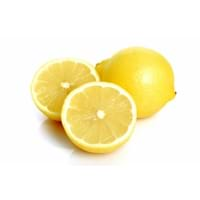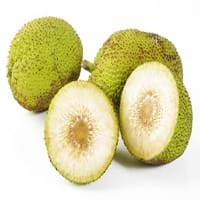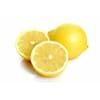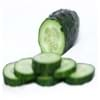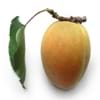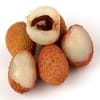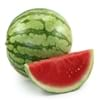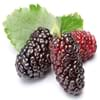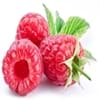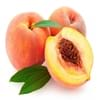Benefits
Health Benefits
Arthritis treatment, Asthma treatment, Cancer prevention, Kidney stone treatment, Prevents constipation, Purging blood, Treatment of rheumatism
Cancer prevention, Heart care, Maintains healthy cholesterol level, Treatment of skin Diseases
General Benefits
Boosts immune system, Cures headache, Cures fever, Digestive aid, Flu treatment, Maintains healthy cholesterol level, Treatment of common cold
Boosts immune system, Digestive aid, Helps in weight loss, Maintains healthy cholesterol level
Skin Benefits
Heals sunburn, Reduces wrinkles, Skin rejuvenation, Treatment of acne, Treatment of skin diseases
Anti-aging benefits, Skin rejuvenation, Treatment of skin diseases
Hair Benefits
Prevents hair loss, Treatment of dandruff
Protects hair, Regulates hair growth, Treatment of dandruff
Allergy
Allergy Symptoms
Eczema, Hives, Inflammation, Itching, Skin rash, Swelling
Hives, Inflammation of nose, Swelling of mouth, tongue or lips
Side Effects
Diuretic effects, Heart burn, Tooth decay, Chances of sunburn
Allergic reaction
Recommeded for
Pregnant Women
Yes
Yes
Lactating Women
Yes
Yes
Best Time to Eat
Along with meal, Best to drink lemon water on an empty stomach., Don't consume at night and before bed
Along with meal, As a snack in the late afternoon, Don't consume at night and before bed, Don't eat after meal
Nutrition
Serving Size
100 g
100 g
Carbs
9.30 g
99+
27.12 g
6
Fiber
2.80 g
22
4.90 g
11
Sugar
2.50 g
99+
11.00 g
17
Protein
1.10 g
21
1.07 g
22
Protein to Carb Ratio
0.12
14
0.04
24
Vitamins
Vitamin A (Retinol)
3.00 mcg
32
22.00 mcg
19
Vitamin B1 (Thiamin)
0.04 mg
24
0.11 mg
3
Vitamin B2 (Riboflavin)
0.02 mg
38
0.03 mg
30
Vitamin B3 (Niacin)
0.10 mg
99+
0.90 mg
11
Vitamin B5 (Pantothenic Acid)
0.19 mg
34
0.46 mg
5
Vitamin B6 (Pyridoxin)
0.08 mg
20
0.10 mg
15
Vitamin B9 (Folic acid)
11.00 mcg
24
14.00 mcg
21
Vitamin C (Ascorbic Acid)
53.00 mg
15
29.00 mg
31
Vitamin E (Tocopherole)
0.15 mg
33
0.10 mg
37
Vitamin K (Phyllochinone)
0.00 mcg
36
0.50 mcg
32
Lycopene
0.00 mcg
9
0.00 mcg
9
Lutein+Zeaxanthin
11.00 mcg
30
22.00 mcg
29
Choline
5.10 mg
24
9.80 mg
7
Fat
0.30 g
28
0.23 g
32
Minerals
Potassium
138.00 mg
99+
490.00 mg
5
Iron
0.60 mg
21
0.54 mg
23
Sodium
2.00 mg
18
2.00 mg
18
Calcium
26.00 mg
17
17.00 mg
24
Magnesium
8.00 mg
27
25.00 mg
9
Zinc
0.06 mg
27
0.12 mg
21
Phosphorus
16.00 mg
29
30.00 mg
17
Manganese
0.03 mg
99+
0.06 mg
99+
Copper
0.04 mg
99+
0.08 mg
26
Selenium
0.40 mcg
13
0.60 mcg
10
Fatty Acids
Omega 3s
26.00 mg
23
18.00 mg
26
Omega 6s
63.00 mg
28
48.00 mg
34
Sterol
Water Content
88.98 g
15
70.65 g
99+
Ash
0.30 g
38
0.93 g
10
Calories
Serving Size
100 g
100 g
Calories in Fresh Fruit with Peel
Not Available
Not Available
Calories in Fresh Fruit without Peel
29.00 kcal
24
103.00 kcal
4
Calories in Frozen Form
22.00 kcal
27
Not Available
Calories in Dried Form
267.00 kcal
25
Not Available
Calories in Canned Form
21.00 kcal
25
Not Available
Calories in Foods
Calories in Juice
22.00 kcal
99+
300.00 kcal
3
Calories in Jam
250.00 kcal
19
Not Available
Calories in Pie
285.00 kcal
24
80.00 kcal
99+
Characteristics
Type
Citrus, Tree fruit
Fruit vegetable, Tropical
Season
All seasons
All seasons
Varieties
Avalon Lemon, Bears Lemon, Buddha's Hand, Bush Lemon, Citron, Eureka Lemon, Dorshapo Lemon, Finger Citron and Fino Citron
Koqo, Tamaikora, Temaipo, Uto Kuro, Samoa, Buco Ni Viti and Kulu Dina
Seedless Variety
Yes
No
Color
Yellow, Yellowish-orange
White, Yellow
Inside Color
Yellow
White
Shape
Round
Oval
Texture
Succulent
Tough
Taste
Sour
Bland
Origin
China, India
South Pacific
Grows on
Trees
Trees
Cultivation
Soil Type
Well-drained
Loam, Sand, Sandy loam, Well-drained
Soil pH
5.5-6.5
6-7.5
Climatic Conditions
Hot, Sunny
Humid, Rainfall, Warm
Facts
Facts about
- Oil extracted from lemon peels is used for fingerboard of guitars.
- During Renaissance, ladies used lemons to redden their lips.
- Aroms of lemon decreases the level of stress hormones.
- The milky sap of breadfruit tree is used as glue & bark is used to make papers.
- Breadfruit tree produces 1st fruit after 2-3 years from planting & remains productive for decades.
- The seeds of breadfruit are edible.
In Alcoholic Beverages
Wine
Yes
Yes
Beer
Yes
Yes
Spirits
Yes
Yes
Cocktails
Yes
Yes
Production
Top Producer
China
Jamaica
Other Countries
Argentina, Brazil, India, Iran, Italy, Mexico, Spain, Turkey, United States of America
Africa, India, United States of America
Top Importer
United States of America
United States of America
Top Exporter
Mexico
Jamaica
Scientific Name
Botanical Name
Citrus limon
Artocarpus altilis
Synonym
Not Available
Artocarpus communis or Artocarpus incisa
Classification
Domain
Eukarya
Eukarya
Kingdom
Plantae
Plantae
Subkingdom
Tracheobionta
Tracheobionta
Division
Magnoliophyta
Magnoliophyta
Class
Magnoliopsida
Magnoliopsida
Subclass
Rosidae
Magnollidae
Order
Sapindales
Rosales
Family
Rutaceae
Moraceae
Genus
Citrus
Artocarpus
Species
C. limon
A. altilis
Generic Group
Citrus fruit
Mulberry
|
||
|
||
|
